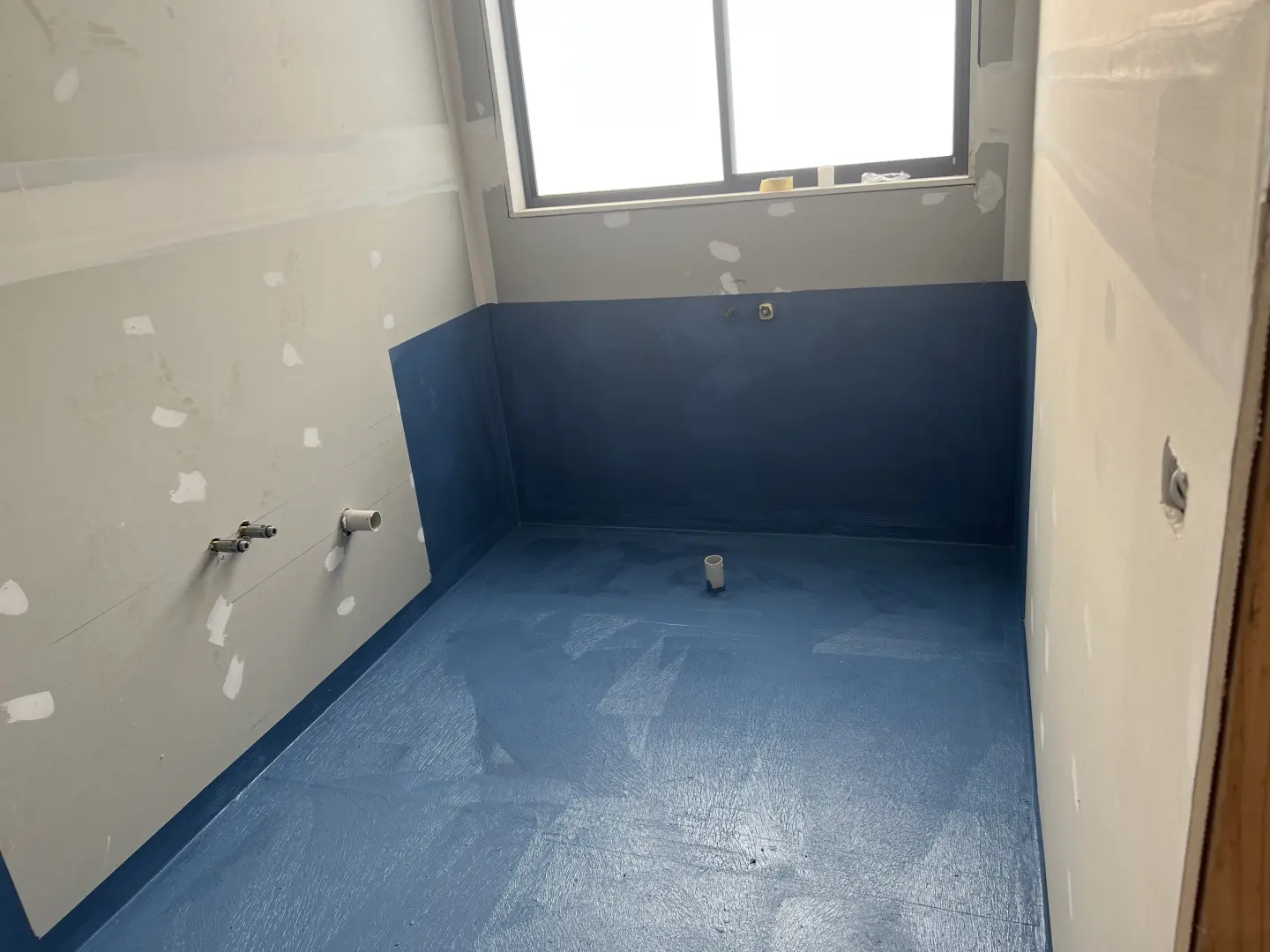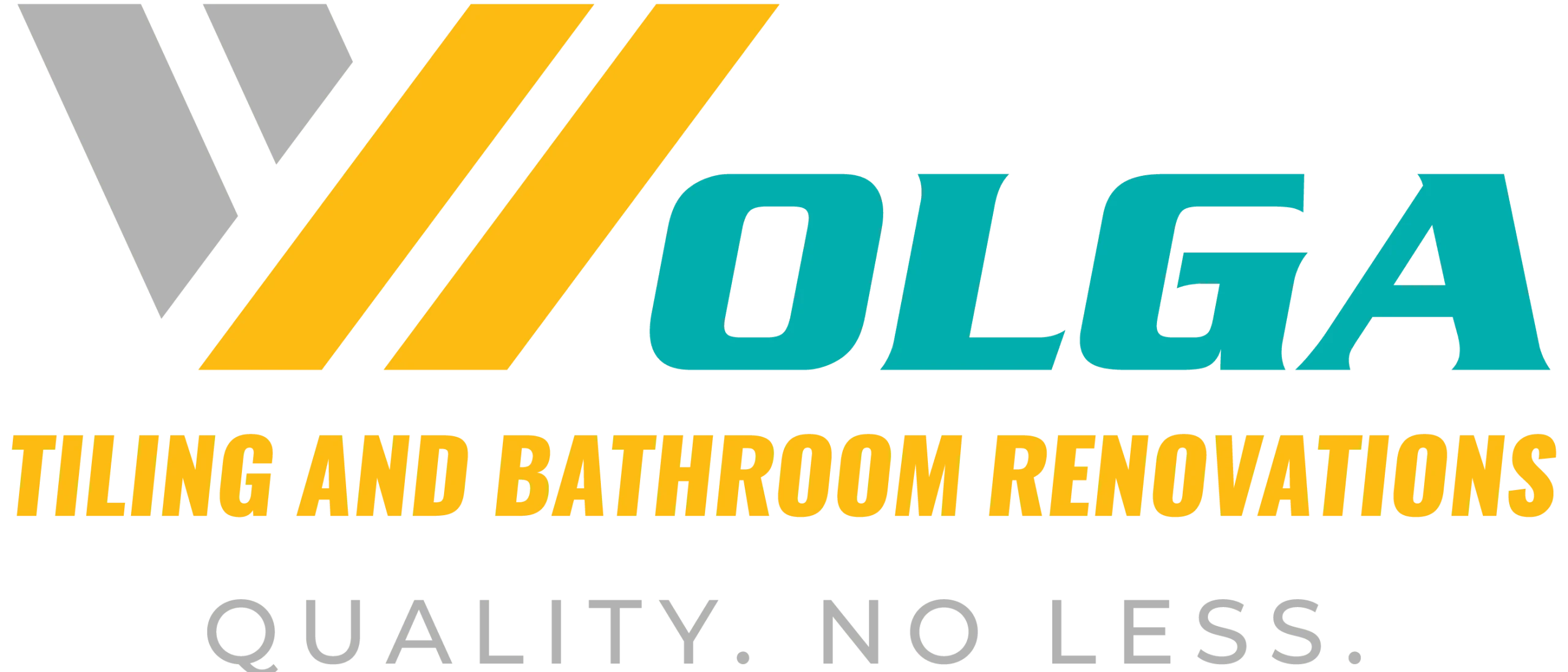WATERPROOFING
Waterproofing holds utmost significance in the tiling procedure, particularly when dealing with interior wet areas like bathrooms and laundries. Our team is comprised of highly skilled and licensed waterproofers who possess the necessary expertise to meticulously prepare your wet areas. We adhere rigorously to the Australian Standards, ensuring that all aspects of our work meet the highest quality benchmarks. Moreover, we exclusively utilize top-notch products known for their durability, guaranteeing long-lasting results.
Liquid Applied Membrane Waterproofing

Liquid-applied membranes are brush-on materials that provide effective waterproofing for tiled showers. Liquid waterproofing is compatible with various bases, like foam boards, cement backer boards, or mortar bases (mud beds).
Pre-made foam bases are also available for easy installation. This method eliminates the need for additional layers of mortar and allows for direct tiling.
Pros
● Easy to use and apply, making it a fast and user-friendly option.
● Doesn’t require cutting or folding and can easily be painted on.
● Suitable for custom designs or odd shapes, as it can be painted on in any shape desired.
Cons
● Requires shower base (sloped mud-bed or backer board).
● Expertise is required for proper application.
● Requires additional time to dry before tiling.
Foam Board Waterproofing
shower panels affordably accommodate finished shower dimensions between 32 and 72 inches with an interlocking design that can be quickly and easily modified to any size or shape directly on-site. Site-sizable pan systems enable installers to contend with a full range of rough-in configurations, including above-the-floor, flush or at-the-surface, and through-the-floor or depressed waste connections.
Lightweight yet durable, these pans are sustainably made with 100% recycled plastic as part of QuickDrain’s commitment to minimize its environmental footprint. An advantage for architects and specifiers is that these recycled components may make an installation eligible for LEED certification points.
Pros
● Time-saving installation.
● Eliminates the need for a traditional mortar bed.
● Most foam boards are site-sizable.
● Easy to work with and cut on-site.
● Pre-sloped.
● Can be an environmentally friendly option.
Cons
● More costly than other methods
● Requires an additional layer of liquid or fabric waterproofing
Waterproofing Best Practices
Waterproof vs. Water-resistant Wall Board: Use waterproof wallboards to prevent moisture intrusion. Water-durable products are insufficient as they allow some water penetration, potentially causing mold and mildew. Follow TCNA guidelines to protect adjacent structures from moisture.
Protecting Weep Holes and Pre-sloping the Floor: Pre-sloping the shower base and proper weep hole protection are vital to prevent water buildup and structural damage. Ensure the drain clamping ring keeps weep holes clear, and use appropriate methods to avoid excess silicone that blocks the weep holes.
With you can install a perfect tile shower pre-slope that requires half the mortar and half the time. Perfect Slope Tile Shower Pre-Slope Base can be used where the code requires a slope to be installed beneath the PVC shower pan liner.
Flood Testing
Perform a flood test before tile installation to check for leaks. Repair any issues and retest to ensure a leak-free installation.
By adhering to these best practices and selecting the most suitable waterproofing method for your tiled shower installation, architects, installers, and building owners can ensure the longevity, functionality, and sustainability of their projects while minimizing the risks associated with water damage and mold growth.
